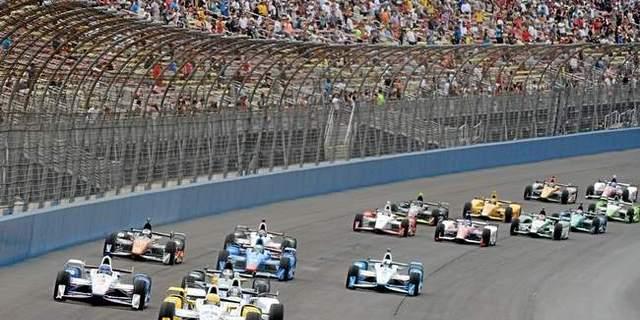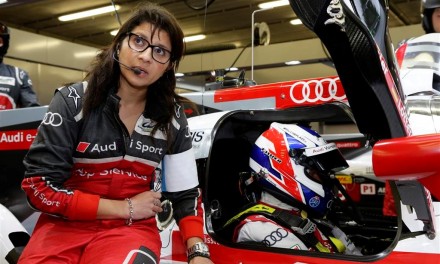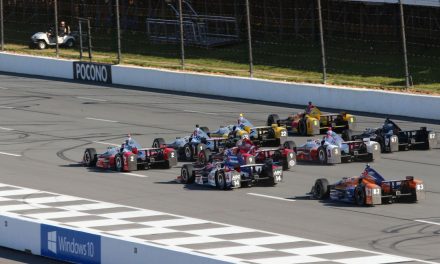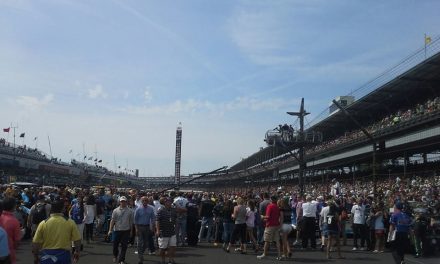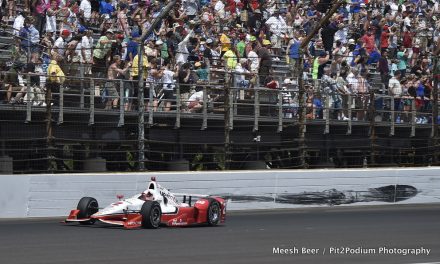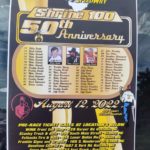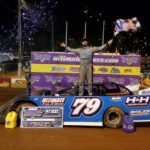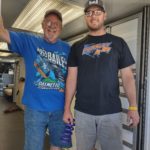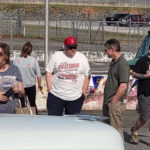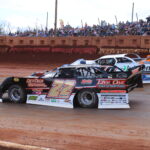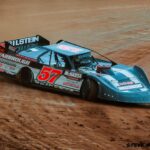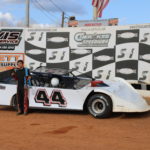Story by Patrick Reynolds photo courtesy Pasadena Star-News
I watched the MAVTV 500 held at the Auto Club Speedway in Fontana, California which was a fantastic race for the Verizon IndyCar Series.
Or at least I thought it was a fantastic race.
Twenty-three cars took the green flag, a good portion of the field stayed competitive, and each pf those threatened to be a factor for the win. One breathtaking move after another was executed. Three and four wide passes were seen all day. On occasion, five wide was not an exaggeration. Side pods and open wheels maneuvered to within fractions of an inch of each other. The 250 laps produced 80 official lead changes, the ones recorded only at the start-finish line. There were plenty more unofficial lead changes.
As I watched the race unfold I felt I was watching one of the best IndyCar races I had ever seen.
Man, this series could use more races like this, I thought. This race will do a lot to help IndyCar with their popularity, I thought.
After the checkered flag waved, multiple drivers were not thinking the same.
Will Power and Tony Kanaan were two of the most outspoken and critical of the race.
Kanaan finished second and was visibly upset at the style of racing. Power crashed late in the event with Takuma Sato and was scored 19th.
Neither enjoyed pack racing. The memory of the death of their friend and two-time Indianapolis 500 winner Dan Wheldon comes to the forefront in conversation.
Wheldon lost his life in a crash during the 2011 IndyCar season finale at Las Vegas Motor Speedway. That race was halted and eventually cancelled after a red flag with only 12 of 200 laps complete. A multi-car crash saw Wheldon soar through the air and crash airborne into a catch fence. The IndyCar pack-style of racing was largely maligned.
Power and Kanaan spoke their minds in television interviews following the 500 in Fontana.
“What are we doing? What are we doing?†said Power. “We went in there and told them (IndyCar officials) it will be pack racing. That was a Vegas situation right there.â€
Power said, “As exciting as it is, it’s just insane because you can’t get away and you have to take massive risks to gain track position. That’s crazy racing. Crazy. Crazy. We just don’t need another incident like we had at Vegas and running like this, it’ll happen. It’s just a matter of time.â€
Kanaan said, “It was a crazy race so I’m glad I’m in one piece.â€
“I think it was a great race for the fans, but I get criticized a lot when I talk about this kind of thing, but people are not in the race car to see… 215 mph doing this… I would like you guys to try… the people that criticize us,†Kanaan said.
The Las Vegas finale is somberly remembered for the loss of Wheldon. What is not always mentioned is the exciting opening of that race. As a race fan, the first ten laps were thrilling.
Where we come to a crossroads is the carnage and tragic ending of Wheldon’s life, meeting the exhilarating and spectacular races that IndyCar puts on at the down force tracks, like Fontana.
Do I want to see more races like the one I saw in Fontana? Absolutely. Do I want to see another tragedy like Wheldon’s? Absolutely not.
So where do we go from here?
While Kanaan and Power spoke negatively, not all drivers felt the same way.
Ryan Briscoe flipped in the front stretch grass and did not bash the series. His crash with Ryan Hunter-Reay was made worse appearing because of the infield grass that contributed to his car getting upside down.
Graham Rahal won the 500 and the winner is rarely a good litmus test for gauging criticism. He however, distinguished between Fontana and Las Vegas by pointing out the five lanes available in Fontana versus the two lanes in Vegas.
Fontana’s third-place finisher Marco Andretti stated he had fun. A.J. Foyt said that type of racing never bothered him when he did it. Ed Carpenter was bothered by those drivers speaking negative comments both about the race specifically and IndyCar racing overall.
During Fontana practice some drivers gave feedback that the predicted pack racing may dissipate with tire degradation. Yet that never came to fruition and the field never broke up too far at the two-mile Fontana oval. The many green-flag laps could be contributed to the track being wider and having more racing lanes than the typical 1.5-mile speedways.
Fontana was the best IndyCar race I have seen in a long time. This is exciting racing that the series needs. The Dan Wheldon safety angle looms as a strong consideration.
So where do I stand? What is my point?
Here it is.
No fan will buy a ticket to anything that they can do at that skill level, whether that be music, sports, or theater. People attend any event and watch on television because they are seeing something they do not- and in many cases- cannot do. Auto racing falls under this. We want to watch the bravery, the thrill, the passing… the risk.
I do not want to see anyone be hurt or killed. I want to see drivers do something that we can’t do. There is danger involved.
I believe in making racing as safe as it can possibly be. NASCAR’s safety focus increased exponentially following Dale Earnhardt’s death. Wheldon helped develop the new IndyCar chassis that debuted in 2012. The car has proven to provide closer racing in a safer vehicle.
In decades past, the danger and a potential loss of life was accepted by race car drivers. That is part of what made them special. Men like Parnelli Jones and Roger Ward knew the risks and raced anyway. They drove with the safest equipment at the time, which pales in comparison to today’s technology.
However, the absolute safest a race car can be, is parked at a standstill with no movement. There is not much of a race there.
Serious crashes can take place on any size or configuration of track, and they have. Drivers have been killed racing at a quarter of the speed the IndyCars performed at in Fontana.
Race car driving is inherently dangerous. There is no absolute safe way to go about it. Do I want another repeat of the day we lost Dan Wheldon? No. Is it my life on the line every time a green flag is thrown? No. it doesn’t have to be theirs either. I have tremendous admiration and respect for Power and Kanaan- both their driving talents and their opinions. But this is a profession they choose to do, not one they have to do. The fact is there are thousands of short track and road racers around the world that will accept the opportunity, and risk, if any current IndyCar driver doesn’t want to.
Keep the racing safety initiatives moving forward. Never stand still. Keep advancing safety technology in cars, tracks and driver equipment. But do not lose Fontana or events that produce similar results.
Fontana was a tremendous race. IndyCar needs more races like this one, not less.
The Fontana MAVTV 500 excitement needs to carry over to other races for years to come in order to reenergize IndyCar racing- a reenergizing that we’ve been waiting to happen for over 20 years.
Patrick Reynolds is a former professional NASCAR mechanic who hosts Motor Week LIVE! Mondays 7pm ET/ 4pm PT on www.racersreunionradio.com

